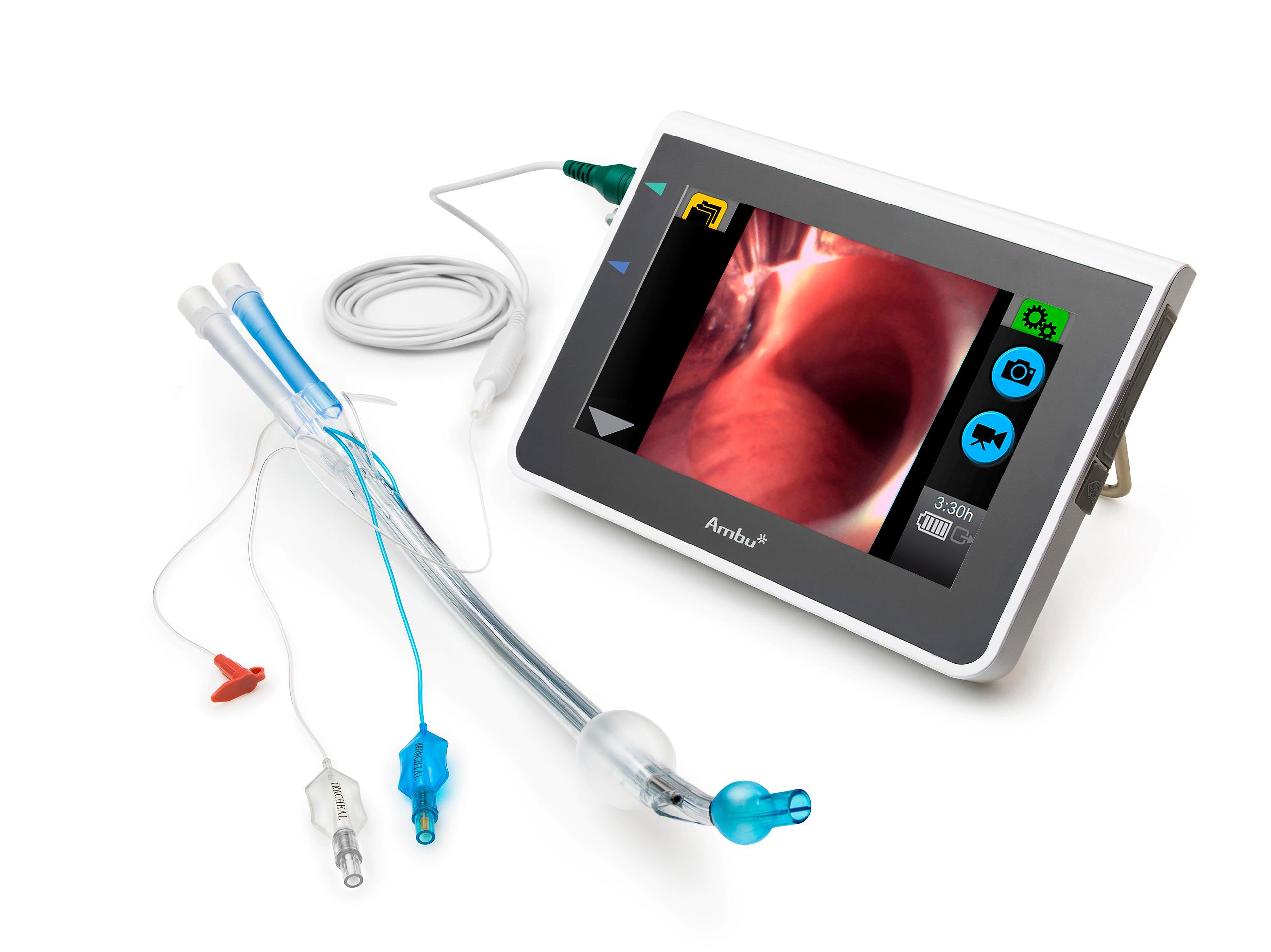
A comparative study of Ambu’s VivaSight-DL with Mallinckrodt’s Broncho-Cath found that the Ambu device’s ability to continuously visually monitor the double lumen tube offered several advantages.
It enabled immediate repositioning as needed and visual feedback of the endobronchial cuff. It also reduced the quantity of equipment required while being cost neutral, the authors write.
The VivaSight device was connected to the Ambu aView screen through the provided purpose-built cables, which guarantee continuous visual feedback throughout induction, intubation and surgery. The lens is cleared by a suction/flush port.
Esophagectomies are surgeries to remove some or most of the esophagus, which is the swallowing tube between a person’s mouth and stomach.
The authors of the study, conducted at Wrexham Maelor Hospital in the United Kingdom, report that the fixed optics also improved left and right identification, which is especially helpful once a patient is put in a prone position.
The hospital does about 50 such surgeries each year and designed the study to pilot the use of the left sided VivaSight-DL DLT during esophageal surgery as an alternative to the single-use DLT (Mallinckrodt’s Broncho-Cath) and flexible bronchoscope (the Ambu aView 4 slim). The VivaSight is similar in length and diameter to the Mallinckrodt.
The authors note that if secretion clearance or direct visualization beyond the tracheal lumen or via the bronchial lumen is necessary, a flexible bronchoscope should also be available.
Ambu’s VivaSight showed no heating during the trial and there were no documented airway complications. Staff reported being satisfied with the performance of the equipment, the authors write.
The cost of a double lumen tube combined with a single-use flexible bronchoscope is comparable to the cost of a VivaSight-DL.
Esophageal surgery carries a substantial associated morbidity and mortality with a 25 percent, five-year survival rate, according to the authors.


